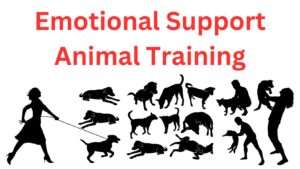Dachshund Dog Breed | A Comprehensive Handbook
Dachshund Dog Breed
A Comprehensive Handbook
Get ready to embark on a whimsical journey into the world of Dachshunds – those delightful, elongated charmers that redefine what it means to have a furry friend!
Ever imagined having a loyal companion with the stature of a hot dog but the heart of a lion?
Picture this: a spirited adventurer with a body that defies gravity, confidently exploring the world at their own pace!
What if I told you that within that distinctive silhouette lies an abundance of affection, intelligence, and a dash of comic charm?
Join us as we unravel the endearing tales of the Dachshund, where every wag of the tail is a testament to the joy they bring.
Are you ready to be captivated by the unique charisma of these lovable hounds?
Let the adventure begin!

Dachshund Dog
| Characteristic | Description |
|---|---|
| Size | Small to Medium, typically 8 to 9 inches at the shoulder |
| Weight | Standard: 16 to 32 pounds; Miniature: Up to 11 pounds |
| Lifespan | 12 to 16 years |
| Temperament | Curious, Clever, Spunky |
| Activity Level | Moderate to High |
| Coat Type | Smooth, Long-haired, Wire-haired |
| Coat Colors | Various colors and patterns, including dapple and brindle |
| Grooming Needs | Low to Moderate, depends on coat type |
| Health Concerns | Can be prone to back issues, obesity, dental problems |
| Trainability | Intelligent but may have a stubborn streak |
| Exercise Requirements | Moderate, daily walks and playtime |
| Good with Children | Generally good, supervision recommended with small kids |
| Adaptability | Adapts well to various living environments |
| Special Considerations | Monitor weight to prevent back issues, dental care important |
Origin & History of Dachshund
Dachshunds, those lively and elongated canines, have a history as captivating as their distinctive appearance.
Let’s embark on a journey through time to uncover the origins and evolution of these delightful little hounds.
- The Roots of the Dachshund:
Germany, the Birthplace
- Dachshunds, affectionately known as “wiener dogs,” trace their roots to 17th-century Germany.
- Originally bred for hunting, their name translates to “badger dog” (‘Dachs’ meaning badger, and ‘hund’ meaning dog).
- Purposeful Beginnings:
Hunters’ Companions
- Dachshunds were developed for their exceptional burrowing abilities, ideal for pursuing burrow-dwelling creatures like badgers and foxes.
- Their elongated bodies and sturdy legs were tailor-made for navigating tight spaces.
- Evolution of Breeds:
Miniature and Standard Varieties
- Over time, breeders crafted variations in size to suit different hunting needs.
- Miniature Dachshunds were bred for hunting smaller game, while standard ones remained adept badger trackers.
- Popularity Soars:
From Fields to Homes
- The breed gained popularity in the 19th century when it transitioned from a hunting companion to a beloved household pet.
- Queen Victoria’s fondness for Dachshunds helped catapult them into the spotlight.
- Crossing Continents:
Global Appeal
- Dachshunds reached the United States in the late 19th century, quickly captivating hearts with their unique charm.
- The American Kennel Club (AKC) officially recognized the breed in 1885.
- Dachshunds in Popular Culture:
Cinematic Stars and More
- The breed’s endearing qualities have made them frequent stars in movies, cartoons, and advertisements.
- Their distinctive appearance has secured a lasting place in the hearts of dog lovers worldwide.
- Challenges Along the Way:
World Wars and Changing Tides
- Dachshunds faced prejudice during World War I and II due to their German roots, but their undeniable charm helped overcome biases.
- Today, they stand as one of the most cherished and recognized dog breeds globally.
Summary
In the tapestry of canine history, the Dachshund has woven itself a unique and enduring story.
From humble beginnings as tenacious badger hunter to becoming a cherished companion in households across the globe, these delightful dogs have left pawprints on hearts and history alike.
The Dachshund’s journey showcases the resilience and adaptability of our four-legged friends, reminding us that sometimes, the most remarkable tales come in small, elongated packages.
Dachshund Dog Breeds
Dachshunds, renowned for their distinctive appearance, come in various breeds, each with unique characteristics.
Let’s delve into the charming diversity of Dachshund breeds.
- Standard Dachshunds:
Elegance in Size
- Original badger hunters, these standard-sized Dachshunds are robust, with a height of around 8-9 inches.
- Known for their courage and loyalty, they make excellent family pets and watchdogs.
- Miniature Dachshunds:
Pocket-Sized Charmers
- Bred to hunt smaller game, Miniature Dachshunds stand at 5-6 inches tall.
- Adaptable and affectionate, they thrive in various living spaces, making them popular companions.
- Long-Haired Dachshunds:
Graceful and Fluffy
- Sporting a silky coat, long-haired Dachshunds are recognized for their elegance.
- Regular grooming is essential to maintain their lovely, flowing locks.
- Smooth-Haired Dachshunds:
Sleek and Shiny
- The classic Dachshund look, with a short and smooth coat.
- Easy to groom, these pups are the quintessential image of the breed.
- Wire-Haired Dachshunds:
Bold and Textured
- Known for their distinctive wire-like coat, providing extra protection in rough terrains.
- A spirited and playful demeanor makes them a delightful addition to any family.
- Dachshund Colors:
Beyond Brown
- Dachshunds come in various colors, including red, black, chocolate, cream, and dapple.
- Color variations add to the breed’s visual appeal and individuality.
- Crossbreeds:
Designer Dachshunds
- Crossbreeds like the Dachshund-Chihuahua mix, known as the “Chiweenie,” combine the best of both breeds.
- These hybrids often inherit the Dachshund’s playful spirit and the Chihuahua’s compact size.
Summary
In the world of Dachshunds, diversity is the spice of life. Whether you prefer the elegance of the long-haired, the classic look of the smooth-haired, or the bold texture of the wire-haired, there’s a Dachshund breed to suit every taste.
These pocket-sized companions, with their varied colors and charming personalities, continue to capture the hearts of dog lovers worldwide.
Embracing the unique qualities of each Dachshund breed adds a colorful dimension to the already rich tapestry of canine companionship.
Physical Characteristics
The Dachshund, with its unique physique, stands out in the canine world.
Let’s explore the distinctive physical characteristics that make this breed both charming and unmistakable.
- Body Shape:
Low and Elongated
- Dachshunds boast a long body with short legs, a design crafted for burrowing into tight spaces.
- This distinctive shape is a nod to their original purpose as tenacious badger hunters.
- Three Coat Varieties:
Sleek, Fluffy, or Textured
- Smooth-haired Dachshunds sport a short and shiny coat, emphasizing their classic look.
- Long-haired Dachshunds showcase elegance with silky, flowing locks.
- Wire-haired Dachshunds, with their distinct rough coat, embody a bold and textured appearance.
- Ears and Tail:
Ears Aflap and Tails A’Wag
- Dachshunds exhibit floppy ears that frame their expressive faces, adding to their endearing charm.
- Their tails, carried high, contribute to their confident and spirited demeanor.
- Size Variations:
Standard or Miniature
- Standard Dachshunds stand around 8-9 inches tall, portraying robust strength.
- Miniature Dachshunds, at 5-6 inches, embody a pocket-sized package of affectionate energy.
- Weight Range:
Featherlight to Sturdy
- Dachshunds typically weigh between 16 to 32 pounds, varying based on their size and build.
- Their compact stature belies a surprising strength, fitting for their historical hunting prowess.
- Color Palette:
From Reds to Dapples
- Dachshunds exhibit a diverse range of coat colors, including red, black, chocolate, cream, and dapple.
- The array of colors enhances the breed’s visual appeal and individuality.
- Muscular Build:
Power in a Petite Package
- Despite their small size, Dachshunds boast a muscular build, reflecting their heritage as skilled hunters.
- This combination of strength and agility makes them excellent companions for various activities.
Summary
The Dachshund’s physical characteristics are a testament to their unique history and purpose.
From their low-slung bodies to the array of coat varieties and colors, every aspect contributes to the breed’s undeniable charm.
Beyond their iconic silhouette, these playful and affectionate dogs continue to capture the hearts of dog enthusiasts, proving that dynamite indeed comes in small, elongated packages.
Behavioral Characteristics
Beneath the distinctive physique of a Dachshund lies a world of vibrant temperament.
Let’s unravel the layers of their playful and spirited nature that make them irresistible companions.
- Playful and Energetic:
Constant Tail Wags
- Dachshunds are bundles of energy, always ready for a game of fetch or a brisk walk.
- Their playfulness makes them delightful companions for families and individuals alike.
- Affectionate Companions:
Lap Dogs at Heart
- Despite their hunting roots, Dachshunds are known for their affectionate nature.
- They thrive on human interaction and love nothing more than snuggling up with their owners.
- Curious Explorers:
Noses to the Ground
- With a keen sense of smell, Dachshunds are natural explorers, always eager to investigate their surroundings.
- Their curiosity adds a spark to daily walks and playtime.
- Independent Thinkers:
Clever Canines
- Dachshunds possess a streak of independence and intelligence.
- While this can make training a bit challenging, their cleverness is part of their charm.
- Fearless Guardians:
Big Bark, Small Size
- Dachshunds are surprisingly courageous, often forgetting their size when it comes to protecting their homes.
- Their distinctive bark serves as both a warning and a declaration of their presence.
- Social Butterflies:
Welcoming to All
- These social dogs typically get along well with children, other pets, and even strangers.
- Their friendly demeanor makes them excellent companions in various social settings.
- Potential for Stubbornness:
Strong-Willed Streak
- Dachshunds, with their strong personalities, may exhibit a touch of stubbornness.
- Patience and positive reinforcement are key elements in successful training.
Summary
In the world of canine companionship, Dachshunds carve a niche with their spirited and loving temperament.
From playtime antics to fearless guardianship, these small dogs offer a whole lot of heart and personality.
Their playful nature, coupled with an affectionate disposition, ensures that life with a Dachshund is always brimming with joy and delightful surprises.
Care and Grooming
Dachshunds, with their distinct long bodies and playful personalities, require some specific care to keep them happy and healthy.
Let’s dive into the essentials of caring for and grooming these charming little companions.
- Regular Exercise:
Keep Those Legs Moving
- Dachshunds may be small, but they love to move. Daily walks and playtime help maintain their weight and overall health.
- Exercise is crucial to prevent weight gain, especially given their susceptibility to back issues.
- Balanced Diet:
Fueling the Wiener Machine
- Feed your Dachshund a well-balanced diet suitable for their size and age.
- Be cautious with treats to avoid overindulgence and potential weight problems.
- Dental Care:
Bright Smiles, Happy Dogs
- Dental hygiene is vital. Regular brushing and dental treats can prevent dental issues.
- Small breeds like Dachshunds are prone to dental problems, making oral care a priority.
- Grooming the Coat:
Sleek, Fluffy, or Textured Beauty
- Smooth-haired Dachshunds need minimal grooming. A quick brush helps keep their coat shiny.
- Long-haired Dachshunds require more attention with regular brushing to prevent tangles.
- Wire-haired Dachshunds benefit from professional grooming to maintain their unique coat texture.
- Bathing Routine:
Occasional Splashes
- Dachshunds are generally clean dogs and don’t require frequent baths.
- Aim for a bath every few months, or as needed, using a mild dog shampoo to preserve their skin’s natural oils.
- Nail Care:
Trimming for Tiptoe Comfort
- Keep an eye on your Dachshund’s nails and trim them regularly.
- Long nails can be uncomfortable for your pup and may affect their gait.
- Ear Maintenance:
Funky Ears, Clean Solutions
- Check your Dachshund’s ears regularly for signs of infection or wax buildup.
- Gentle cleaning with a vet-approved solution can prevent ear problems.
- Back Health Awareness:
Handle with Care
- Due to their unique physique, Dachshunds are prone to back issues.
- Lift and support their hindquarters when picking them up to minimize stress on their spine.
Summary
Caring for a Dachshund involves a blend of love, attention, and some breed-specific considerations.
From maintaining their distinctive coats to safeguarding their back health, these small dogs reward their owners with boundless affection when given the care they deserve.
With a little effort and a lot of love, your Dachshund will thrive as a happy and healthy member of your family.
Health and Safety
While the Dachshund’s playful antics bring joy, ensuring their health and safety is paramount.
Let’s explore some essential tips to keep your wiener dog happy and thriving.
- Regular Veterinary Check-ups:
Preventive Paws on Duty
- Schedule regular vet visits to monitor your Dachshund’s overall health.
- Early detection of issues is key to addressing health concerns effectively.
- Weight Management:
Light on the Wiener Waist
- Dachshunds are prone to back problems, so maintaining a healthy weight is crucial.
- A balanced diet and regular exercise help prevent obesity-related issues.
- Spinal Health Awareness:
Handle with Care
- Due to their long bodies, Dachshunds are susceptible to back problems.
- Lift them properly and avoid activities that strain their spines, like excessive jumping.
- Dental Hygiene:
Toothsome Tips
- Dental problems are common in small breeds. Regular brushing and dental treats promote oral health.
- Consult your vet for professional dental care if needed.
- Parasite Prevention:
Battles Beyond the Flea Circus
- Keep your Dachshund protected from parasites like fleas and ticks.
- Regular preventive treatments and checks keep these pests at bay.
- Allergen Awareness:
Sniffing Out Sensitivities
- Dachshunds may have allergies, so monitor for signs like itching or digestive issues.
- Consult your vet to identify and manage allergens affecting your pup.
- Safe Play Areas:
Bounding Without Boundaries
- Create secure play zones to prevent injuries or escapes.
- Dachshunds, being curious, may wander, so ensure a safe and enclosed environment.
- Temperature Considerations:
Cool Comforts and Warm Nooks
- Dachshunds are sensitive to extreme temperatures.
- Protect them from harsh weather conditions and provide cozy spots in colder seasons.
- Identifying Breed-Specific Ailments:
Awareness is Armor
- Dachshunds may be prone to conditions like intervertebral disc disease (IVDD).
- Familiarize yourself with breed-specific health concerns and seek prompt veterinary attention if needed.
Summary
Caring for your Dachshund extends beyond cuddles and playtime.
Prioritize their health and safety with regular vet visits, a balanced lifestyle, and an understanding of breed-specific considerations.
By being proactive and attentive, you ensure that your delightful wiener dog enjoys a long, happy, and healthy life by your side.
Dachshund's Diverse Roles
Dachshunds, with their charming demeanor, make exceptional companions.
Beyond being adorable, they also shine as Emotional Support Animals (ESAs) and even as Service Pets, playing crucial roles in enhancing the well-being of their human counterparts.
- Dachshunds as Emotional Support Animals (ESAs):
Furry Friends for Emotional Comfort
- Dachshunds excel as ESAs, providing companionship and emotional support to those facing mental health challenges.
- Their affectionate nature and loyalty make them ideal for offering comfort during times of distress.
- Qualities that Make Dachshunds Great ESAs:
Compact Size, Big Hearts
- The small size of Dachshunds allows for easy accommodation in various living spaces, making them accessible ESAs.
- Their innate ability to form strong bonds with their owners fosters a sense of security and reassurance.
- Training Dachshunds as ESAs:
Natural Empaths with a Little Training
- Dachshunds, being intelligent and eager to please, respond well to basic training for ESA roles.
- Their intuitive nature often makes them naturally attuned to the emotional needs of their owners.
- Dachshunds as Service Pets:
Beyond Emotional Support to Practical Assistance
- Dachshunds can also serve as Service Pets, assisting individuals with specific physical or mobility challenges.
- Their compact size is advantageous for tasks like retrieving items, providing balance support, or even alerting to medical issues.
- Training Dachshunds as Service Pets:
Specialized Skills for Assistance
- Service Dachshunds undergo rigorous training tailored to the specific needs of their handlers.
- Their intelligence and agility contribute to their success in carrying out tasks that enhance the independence of their owners.
- Legal Considerations:
ESAs and Service Pets Enjoy Certain Protections
- Both ESAs and Service Pets, including Dachshunds, are protected by laws such as the Americans with Disabilities Act (ADA), Air Carrier Access Act (ACAA), and the Fair Housing Act (FHA).
- These legal provisions ensure that individuals with ESAs or Service Pets are granted necessary accommodations like ESA Letters.
Summary
Dachshunds, with their endearing personalities and adaptable nature, go beyond the role of a traditional pet.
Whether offering emotional support as ESAs or providing practical assistance as Service Pets, Dachshunds contribute significantly to the well-being of their human companions.
Their small size may make them pint-sized, but their impact on the lives they touch is undeniably substantial.
Training Tips for Dachshund
Training a Dachshund may seem like a challenge, given their independent nature, but with the right approach, you can turn your adorable wiener dog into a well-behaved companion.
Let’s dive into some effective training tips tailored for these spirited canines.
- Start Early:
Puppies are Sponges
- Begin training when your Dachshund is a puppy. Early training establishes good habits.
- Consistency is key, so start shaping behaviors from the beginning.
- Positive Reinforcement:
Rewards and Praise Rule
- Dachshunds respond well to positive reinforcement, such as treats and praise.
- Use rewards to encourage desired behaviors, reinforcing the connection between good behavior and positive outcomes.
- Be Patient:
Wiener Wisdom Takes Time
- Dachshunds have a stubborn streak. Patience is crucial during training sessions.
- Keep training sessions short and enjoyable, ending on a positive note.
- Socialization Skills:
Friendly Wiener Wiggles
- Socialize your Dachshund early to various people, environments, and other pets.
- Positive social experiences help curb any potential tendencies towards shyness or aggression.
- Consistent Commands:
Clear Communication is Key
- Use consistent commands for basic obedience like sit, stay, and come.
- Dachshunds respond well to a clear and confident leader.
- Leash Training:
Mastering the Wiener Walk
- Train your Dachshund to walk on a leash early on.
- Their hunting instincts may lead to pulling, so teach loose-leash walking for pleasant strolls.
- Avoid Overfeeding:
Treats in Moderation
- Dachshunds love treats, but too many can lead to weight issues.
- Use small, healthy treats during training to maintain a balanced diet.
- Crate Training:
Safe Havens and Wiener Nests
- Introduce your Dachshund to crate training for security and comfort.
- Make the crate a positive space with treats and toys.
- Address Separation Anxiety:
Comforting the Wiener Worries
- Dachshunds may be prone to separation anxiety. Gradually increase alone time to build confidence.
- Leave them with engaging toys to keep them occupied.
Summary
Training a Dachshund requires a mix of patience, positive reinforcement, and clear communication.
Embrace the quirky personality of your wiener dog and turn training sessions into enjoyable bonding experiences.
By incorporating principles like the 7-7-7 Rule for Dogs Training and following the 10 Golden Rules of Dog Training, with consistency and a wagging tail, you’ll find that your Dachshund is not just a charming companion but also a well-behaved one.
Adopting a Dachshund
Welcoming a Dachshund into your home is an exciting journey filled with wagging tails and furry affection.
In this comprehensive guide for pet adoption, we’ll explore the reasons why adopting a pet is a wonderful choice and provide practical insights on how to choose the perfect pet.
Why Adopt a Dachshund?
Compact Companionship:
- Dachshunds, with their distinctive elongated bodies, make charming and affectionate companions.
- Adopting a Dachshund brings joy and loyalty into your life, making your home a playful haven.
Support Ethical Pet Ownership:
- Opting for adoption, whether from a shelter or rescue, promotes ethical pet ownership.
- Shelters often have Dachshunds of varying ages, allowing you to find the ideal match for your lifestyle.
How to Choose the Perfect Pet
Evaluate Your Lifestyle:
- Consider your daily routine, living space, and activity level to ensure a harmonious match with a Dachshund’s needs.
- Dachshunds adapt well to various environments but thrive when provided with attention and moderate exercise.
Interaction and Observation:
- Spend time interacting with potential Dachshund adoptees to understand their temperament and compatibility.
- Observing their behavior in different situations helps you make an informed and heartfelt decision.
Health Check:
- Obtain medical records and inquire about the Dachshund’s health history.
- A veterinary check-up is crucial to identify any existing health conditions and ensure a happy, healthy future.
A Comprehensive Guide for Pet Adoption
Commit to Responsible Ownership:
- Pledge to provide a lifetime of care, affection, and attention to your adopted Dachshund.
- Recognize the responsibilities that come with pet ownership, including regular veterinary check-ups, grooming, and a balanced diet.
Prepare Your Space:
- Create a safe and cozy environment for your Dachshund with appropriate bedding, engaging toys, and secure areas.
- Ensure your home is Dachshund-friendly by addressing potential hazards and providing a welcoming atmosphere.
Prioritize Training and Socialization:
- Invest time in positive reinforcement training to build a strong bond with your Dachshund.
- Socialize your Dachshund with diverse environments, people, and other pets to foster a well-rounded temperament.
Summary
Adopting a Dachshund is more than just gaining a furry family member; it’s a commitment to responsible and ethical pet ownership.
Delving into the process involves understanding the significance of pet adoption, meticulously choosing the right Dachshund to suit your lifestyle, and adhering to a comprehensive guide for pet adoption.
This journey promises not only a delightful canine companion but also the fulfillment that comes with providing a loving home.
Get ready for a life adorned with tail wiggles, unconditional love, and the boundless joy of a Dachshund by your side.
Bottom Line
Dachshunds, with their distinctive charm, prove to be versatile companions.
From unraveling their playful temperament to ensuring their health and safety, and even exploring their potential as Emotional Support Animals or Service Pets, these small but mighty dogs bring joy, support, and a whole lot of character to the lives they touch.
Whether you’re training them with patience and positive reinforcement or caring for their unique grooming needs, embracing the wiener wisdom of Dachshunds unlocks a world of delightful companionship and canine camaraderie.
FAQ
Are Dachshunds good pets?
Absolutely! Dachshunds make wonderful pets.
Their affectionate nature, playful demeanor, and loyalty endear them to families and individuals alike.
Despite their small size, they are known for their big personalities, making them delightful companions for those looking for a loving and spirited canine friend.
Is Dachshund aggressive or not?
Dachshunds are not inherently aggressive, but their temperament can vary.
Early socialization and proper training are essential to ensure a well-behaved Dachshund.
Like any dog, their behavior largely depends on factors such as upbringing, training, and individual personality.
With the right guidance, Dachshunds can be friendly, loving, and well-mannered pets.
Are Dachshunds high maintenance?
Dachshunds fall somewhere in the middle when it comes to maintenance.
While their grooming needs are generally moderate, with different coat varieties requiring different attention, they do require regular exercise and mental stimulation.
Their small size and adaptable nature make them suitable for various living spaces, but consistent training and socialization are crucial for a well-adjusted Dachshund.
Do Dachshund dogs bark?
Yes, Dachshunds are known for their vocal nature.
They have a keen sense of hearing and a protective instinct, so they may bark to alert their owners of potential threats.
Proper training can help manage excessive barking and ensure that it is controlled and purposeful.
Are Dachshunds jealous dogs?
Indeed, Dachshunds can be prone to feelings of jealousy.
Their strong bond with their owners means they may become possessive and seek attention when they feel it’s lacking.
It’s important to address this behavior through positive reinforcement and consistent affection to foster a secure and balanced relationship.
Is Dachshund a guard dog?
Dachshunds may exhibit protective behaviors, but they are not typically considered guard dogs.
Their size and vocal tendencies make them effective in alerting their owners to potential dangers, but their friendly and social nature may not align with the guard dog stereotype.
They are, however, excellent watchdogs due to their alertness.
What do Dachshunds eat?
Dachshunds require a balanced and nutritious diet to support their health.
High-quality dog food, appropriate for their age and size, is recommended. Fresh water should always be available.
It’s crucial to monitor their weight to prevent obesity, a common concern in this breed, and consult with a vet for dietary advice tailored to their specific needs.
Do Dachshunds grow fast?
Dachshunds, like many small breeds, tend to grow relatively quickly in the first few months of life. Their growth rate slows down as they approach adulthood.
Proper nutrition, regular vet check-ups, and a controlled growth rate help ensure their bones and joints develop healthily.
Do Dachshunds lick a lot?
Dachshunds, being affectionate by nature, may engage in licking as a form of expressing love and bonding.
However, the frequency of licking varies between individual dogs.
If it becomes excessive or bothersome, it’s essential to understand the context and, if necessary, redirect the behavior through positive training methods.
Are Dachshunds bossy?
Yes, Dachshunds are known for their strong-willed and sometimes bossy nature.
Without proper training and boundaries set early on, they may exhibit behavior that, while often amusing, can become challenging.
Consistent training, positive reinforcement, and establishing yourself as the pack leader can help curb bossy tendencies and foster a harmonious relationship with your Dachshund.

Animal Care and Adoptions Specialist at Homeward Pet Adoption Center, dedicated to finding loving homes for every furry friend. Passionate advocate for the well-being of animals.

ESA Letter Requirements If you are considering obtaining an Emotional Support Animal (ESA) and an ESA letter, understanding the requirements for obtaining such documentation is

ESA Letter Renewal If you already have an Emotional Support Animal (ESA) and an ESA letter, you may be wondering about the process of renewing

Get an ESA Letter In recent years, the concept of Emotional Support Animals (ESAs) has gained widespread recognition for their invaluable role in supporting individuals

The Role of ESAs in Addiction Recovery Addiction recovery is a challenging journey, often fraught with emotional highs and lows. While traditional therapies and medications

The Impact of ESAs on Reducing Panic Attacks Imagine facing overwhelming panic, your heart racing, your breath quickening, and feeling like the world is closing

ESAs for Senior Citizens In a world brimming with stressors and uncertainties, emotional support animals (ESAs) offer a beacon of comfort and companionship, especially for

ESAs for Children In the realm of emotional well-being, children often require unique forms of support to navigate the complexities of their feelings and experiences.

Public Spaces and ESA Access Rights Step into a world where companionship knows no boundaries and support is always by your side. In our bustling

How to Choose the Right ESA for Your Needs Emotional Support Animals (ESAs) play a crucial role in providing comfort, companionship, and support to individuals

No Pet Fees with ESA LetterA Comprehensive Guide Imagine finding your perfect furry companion, one that not only brings you joy but also provides vital

Benefits of an ESA LetterHow ESA Letters Help Unravel the world of comfort, companionship, and legal privileges as we delve into the benefits of having

Obtain ESA Letter for Your DogCertified ESA Letter for Canine Are you ready to unleash a world of comfort and companionship for you and your

Get Your Cat’s ESA LetterFeline ESA Letter Documentation Introducing your furry friend to the world of emotional support can be life-changing—for both of you. If

10 DIY Dog House IdeasFrom Simple to Stunning Welcome to the ultimate guide for dog lovers and DIY enthusiasts alike! Get ready to embark on

Socialization Tips for Your Dog From Shy to Social Socialization is like a superpower for your furry friend, shaping their behavior and happiness. From playful

Exercise for Your DogTail-Wagging Workouts Get ready to unleash the energy and excitement in your furry friend with tail-wagging workouts! Discover how exercising your dog

Dental Care for Your DogEssential Dental Care Tips Your dog’s dental health is more than just a pretty smile—it’s essential for their overall well-being. Just

Responsible Shock Collar UsageEffective Dog Training Embarking on the journey of shock collar training requires more than just the device itself. It demands a thoughtful

Dog Training with Shock Collar Train Smarter Embarking on the journey of dog training often leads us to explore various methods, with shock collar training

10 Human Foods Toxic to DogsCanine Health Hazard Unlock the secrets to a pet-friendly pantry! Dive into our guide on the 10 human foods that

DIY High Protein Dog Food Recipes Step into the kitchen and embark on a culinary adventure for your four-legged companion with our blog on DIY

Choosing the Right ProteinDiet for Dog Welcome to a canine culinary adventure! In our latest blog, ‘Choosing the Right Protein Diet for Dogs,’ we dive

How Much Protein Does Your Pup Need? Embark on a canine nutrition adventure with our latest blog – ‘How Much Protein Does Your Pup Need?’

The Benefits of High-ProteinDog Foods Embark on a journey to discover the incredible world of high-protein dog foods! Unleash the secrets behind the bowl, as

Dog Training BooksA Complete Guide Embark on a journey of canine education with our comprehensive guide to the best dog training books.Whether you’re a new

Dog Food For Diabetic Dogs Is your furry friend diagnosed with diabetes? Discover the best dog food options tailored to meet their unique nutritional needs.

Fiber Rich Dog FoodsA Complete Guide Dive into the world of fiber-rich dog foods with our complete guide. Explore the benefits of a high-fiber diet

Unhealthy Dog FoodsMust Read Guide Protect your furry friend from potential health hazards. Uncover the red flags in pet nutrition as we unveil the must-read

Healthy Dog FoodsA Comprehensive Guide Elevate your dog’s health and happiness with our detailed guide to nutritious canine diets. Uncover the secrets to selecting wholesome

High Protein Dog FoodsComplete List Fuel your dog’s vitality with our comprehensive list of high-protein dog foods. Discover the benefits of a protein-rich diet and

Dog Food AllergiesA Complete Guide Is your dog showing signs of food allergies? Unravel the mystery with our complete guide. Learn to identify, manage, and

Dog Training With CollarA Comprehensive Guide Explore the world of effective dog training with our comprehensive guide on using collars. Discover the right techniques and

Dog VestA Must-Read Guide For Pet Lovers Elevate your pet’s style and comfort with our must-read guide on dog vests. From fashion to functionality, explore

Dog HouseA Complete Guide For Pet Lovers Create the perfect sanctuary for your furry friend with our comprehensive guide to dog houses. From design considerations

Dog CrateA Comprehensive Guide For Pet Lovers Discover the importance of a well-chosen dog crate in your pet’s life. Our comprehensive guide provides insights into

Dog BedsEverything Pet Lovers Need To Know From size to style, our guide covers everything you need to know about providing the perfect bed for

Dog FoodA Complete Manual for Pet Enthusiasts Uncover the secrets of providing top-notch nutrition for your beloved pet. Our comprehensive manual covers everything you need

Why Only LMHPs Can Prescribe an ESA Letter? Join us on a journey to understand why only Licensed Mental Health Professionals (LMHPs) hold the key

Difference between Psychologists and Psychiatrists Dive into the intriguing realm of mental health as we unravel the nuances distinguishing psychologists and psychiatrists. Discover their unique

Can LMFTs Write an ESA Letter? Delve into the world of Emotional Support Animal (ESA) letters and discover the pivotal role Licensed Marriage and Family













